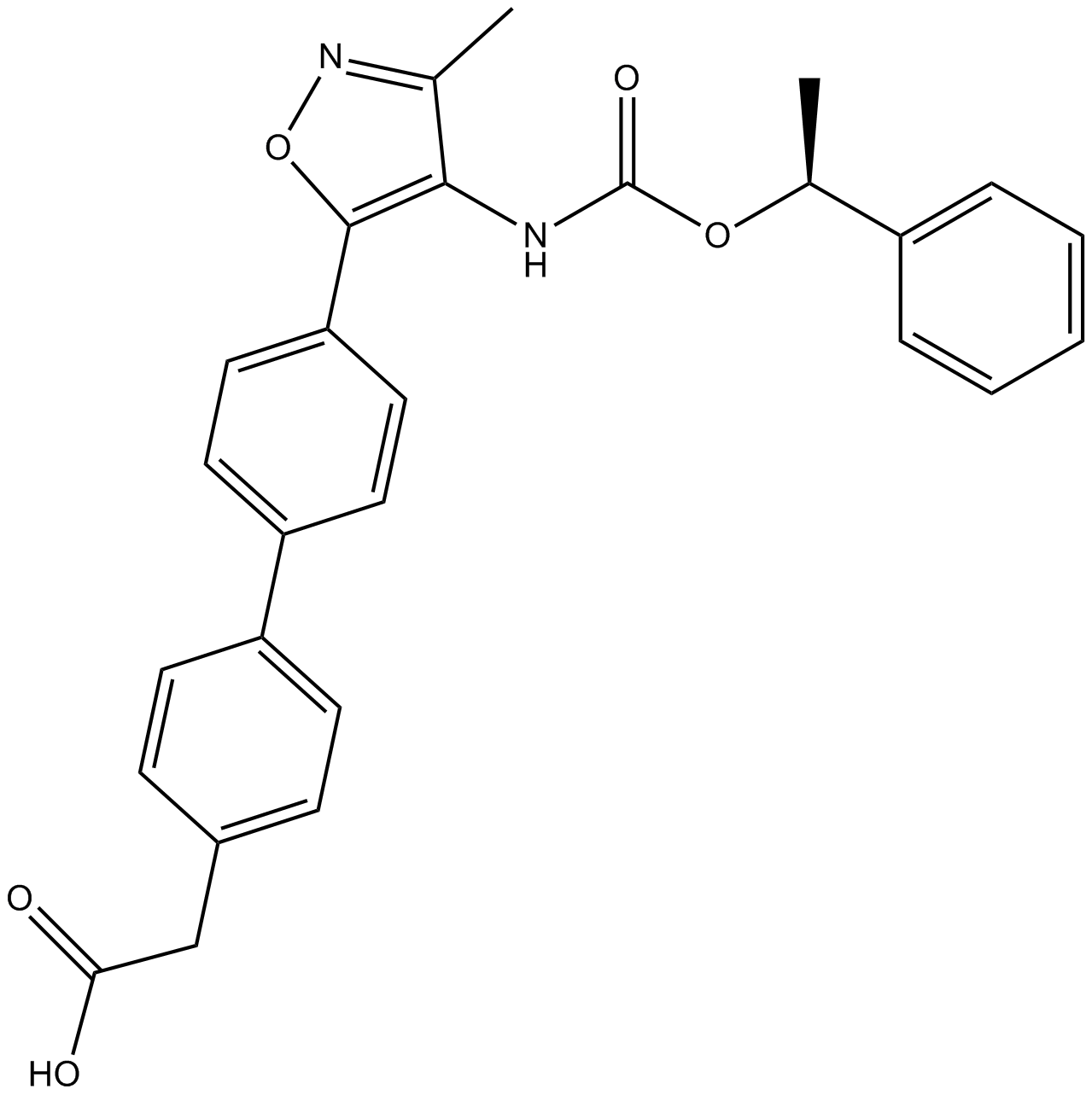AM-095 free base |
| رقم الكتالوجGC15908 |
A selective LPA1 receptor antagonist
Products are for research use only. Not for human use. We do not sell to patients.

Cas No.: 1228690-36-5
Sample solution is provided at 25 µL, 10mM.
AM095 is a novel, potent and orally bioavailable antagonist of lysophosphatidic acid type 1 receptor (LPA1) with IC50 values of 0.73 and 0.98 μM for mouse or recombinant human LPA1, respectively [1].
In vitro, AM095 has shown to inhibit LPA1-induced chemotaxis of both mouse LPA1/CHO cells and human A2058 melanoma cells with IC50 values of 0.78 μM and 0.23μM [1].
In vivo, AM095 could dose-dependently block LPA-induced histamine release with an ED50 value of 8.3 mg/kg in mice. Additionally, AM095 has been revealed to remarkably reduce the BALF collagen and protein with an ED50 value of 10 mg/kg in lungs. AM095 has also shown to decrease both macrophage and lymphocyte infiltration induced by bleomycin in mice [1].
References:
[1] Swaney JS1, Chapman C, Correa LD, Stebbins KJ, Broadhead AR, Bain G, Santini AM, Darlington J, King CD, Baccei CS, Lee C, Parr TA, Roppe JR, Seiders TJ, Ziff J, Prasit P, Hutchinson JH, Evans JF, Lorrain DS. Pharmacokinetic and pharmacodynamic characterization of an oral lysophosphatidic acid type 1 receptor-selective antagonist. J Pharmacol Exp Ther. 2011 Mar;336(3):693-700.
Average Rating: 5 (Based on Reviews and 30 reference(s) in Google Scholar.)
GLPBIO products are for RESEARCH USE ONLY. Please make sure your review or question is research based.
Required fields are marked with *




















